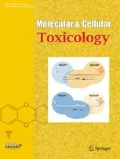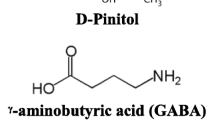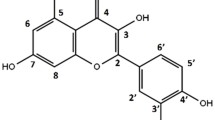Abstract
Rice husk has been shown to possess cancer chemopreventive activity. This study focused on mutagenicity and antimutagenicity of the crude acidified methanolic extract of purple rice husk and its solvent- partitioned fractions using a Salmonella mutation assay and rat liver micronucleus test. The purple rice husk extracts were not mutagenic in S. typhimurium strain TA98, but were mutagenic in TA100 (crude extract and its hydrophilic fractions). There was no significant mutagenicity of purple rice husk extracts in rat liver. The rice husks possessed antimutagenicity against AFB1-induced mutagenesis in both bacterial and animal models. The dichloromethane-partitioned fraction (DPF) showed the highest antimutagenicity. Vanillic acid, a major phenolic compound found in DPF, exhibited antimutagenicity against AFB1 in both bacterial and rat models. The inhibitory mechanism was associated with the induction of detoxifying enzymes in AFB1 metabolism of rat liver. These findings suggested that vanillic acid may be a principal antimutagenic compound in purple rice husk.
Similar content being viewed by others
References
Hamid, A. S., Tesfamariam, I. G., Zhang, Y. & Zhang, Z. G. Aflatoxin B1-induced hepatocellular carcinoma in developing countries: Geographical distribution, mechanism of action and prevention. Oncol Lett 5:1087–1092 (2013).
Marin, S., Ramos, A. J., Cano-Sancho, G. & Sanchis, V. Mycotoxins: occurrence, toxicology, and exposure assessment. Food Chem Toxicol 60:218–237 (2013).
Gross-Steinmeyer, K. & Eaton, D. L. Dietary modulation of the biotransformation and genotoxicity of aflatoxin B1. Toxicology 299:69–79 (2012).
Wu, H. C. & Santella, R. The role of aflatoxins in hepatocellular carcinoma. Hepat Mon 12:1–9 (2012).
Blum, H. E. Hepatocellular carcinoma: Therapy and prevention. World J Gastroenterol 11:7391–7400 (2005).
Steward, W. P. & Brown, K. Cancer chemoprevention: a rapidly evolving field. Br J Cancer 109:1–7 (2013).
Wang, X. et al. Anticancer activity of litchi fruit pericarp extract against human breast cancer in vitro and in vivo. Toxicol Appl Pharmacol 215:168–178 (2006).
McCann, M. J. et al. Anti-cancer properties of phenolics from apple waste on colon carcinogenesis in vitro. Food Chem Toxicol 45:1224–1230 (2007).
Jeon, K. I. et al. Antioxidant activity of far-infrared radiated rice hull extracts on reactive oxygen species scavenging and oxidative DNA damage in human lymphocytes. J Med Food 9:42–48 (2006).
Kim, S. P. et al. Composition of liquid rice hull smoke and anti-inflammatory effects in mice. J Agric Food Chem 59:4570–4581 (2011).
Yang, J. Y., Kang, M. Y., Nam, S. H. & Friedman, M. Antidiabetic effects of rice hull smoke extract in alloxaninduced diabetic mice. J Agric Food Chem 60:87–94 (2012).
Kim, S. J., Park, H. R., Park, E. & Lee, S. C. Cytotoxic and antitumor activity of momilactone B from rice hulls. J Agric Food Chem 55:1702–1706 (2007).
Okuno, Y. & Miyazawa, M. Suppressive components in rice husk against mutagens-induced SOS response using Salmonella typhimurium TA1535/pSK1002 umu test. Nat Prod Res 21:805–809 (2007).
Punvittayagul, C., Sringarm, K., Chaiyasut, C. & Wongpoomchai, R. Mutagenicity and antimutagenicity of hydrophilic and lipophilic extracts of Thai Northern purple rice. Asian Pac J Cancer Prev 15:9517–9522 (2014).
Sankam, P., Punvittayagul, C., Sringam, K., Chaiyasut, C. & Wongpoomchai, R. Antimutagenicity and anticlastogenicity of glutinous purple rice hull using in vitro and in vivo testing systems. Mol Cell Toxicol 9:169–176 (2013).
Yoshida, E. H. et al. Evaluation of the safety of three phenolic compounds from Dipteryx alata Vogel with antiophidian potential. Chinese Medicine 6:1–12 (2015).
Pramanik, K. C. & Pandey, A. K. Natural compounds: prospective of chemoprevention. Endocrinol Metab Synd 2:e115 (2013).
Bbosa, G. S., Kitya, D., Odda, J. & Ogwal-Okeng, J. Aflatoxins metabolism, effects on epigenetic mechanisms and their role in carcinogenesis. Health 5:14–34 (2013).
Mattila, P. & Hellstrom, J. Phenolic acids in potatoes, vegetables, and some of their products. J Food Compost Anal 20:152–160 (2007).
Kampa, M. et al. Antiproliferative and apoptotic effects of selective phenolic acids on T47D human breast cancer cells: potential mechanisms of action. Breast Cancer Res 6:R63–R74 (2004).
Kim, S. J., Kim, M. C., Um, J. Y. & Hong, S. H. The beneficial effect of vanillic acid on ulcerative colitis. Molecules 15:7208–7217 (2010).
Sathyaneson, D. M. & Boobalan, R. Therapeutic effects of vanillic acid on acetaminophen-induced hepatotoxicity in rats. Int J Pharm Biol Sci Arch 1:144–149 (2010).
Taner, G. et al. Use of in vitro assays to assess the potential cytotoxic, genotoxic and antigenotoxic effects of vanillic and cinnamic acid. Drug Chem Toxicol 16:1–8 (2016).
Rawal, S., Kim, J. E. & Coulombe, R. Aflatoxin B1 in poultry: toxicology, metabolism and prevention. Res Vet Sci 89:325–331 (2010).
Resende, F. A., Vilegas, W., Dos Santos, L. C. & Varanda, E. A. Mutagenicity of flavonoids assayed by bacterial reverse mutation (Ames) test. Molecules 17:5255–5268 (2012).
Rietjens, I. M. et al. Flavonoids and alkenylbenzenes: Mechanisms of mutagenic action and carcinogenic risk. Mutat Res 574:124–138 (2003).
Jurado, J., Alejandre-Duran, E. & Pueyo, C. Genetic differences between the standard Ames tester strains TA100 and TA98. Mutagenesis 8:527–532 (1993).
Mortelmans, K. & Zeiger, E. The Ames Salmonella/microsome mutagenicity assay. Mutat Res 455:29–60 (2000).
Habibi Najafi, M. B. & Pezeshki, P. Bacterial mutation; Types, mechanisms and mutant detection method: a review. ESJ 4:628–638 (2013).
Inácio, M. R. C., de Lima, K. M. G., Lopes, V. G. L., Pessoa, J. D. C. & de Almeida Teixeira, G. H. Total anthocyanin content determination in intact açaí (Euterpe oleracea Mart.) and palmitero-juçara (Euterpe edulis Mart.) fruit using near infrared spectroscopy (NIR) and multivariate calibration. Food Chem 136:1160–1164 (2013).
Inboot, W., Taya, S., Chailungka, A., Meepowpan, P. & Wongpoomchai, R. Genotoxicity and antigenotoxicity of the methanol extract of Cleistocalyx nervosum var. paniala seed using a Salmonella mutation assay and rat liver micronucleus tests. Mol Cell Toxicol 8:19–24 (2012).
Takasawa, H. et al. Evaluation of a liver micronucleus assay in young rats (IV): a study using a doubledosing/single-sampling method by the Collaborative Study Group for the Micronucleus Test (CSGMT)/Japanese Environmental Mutagen Society (JEMS)-Mammalian Mutagenicity Study Group (MMS). Mutat Res 698:24–29 (2010).
Suwannakul, N., Punvittayagul, C., Jarukamjorn, K. & Wongpoomchai, R. Purple rice bran extract attenuates the aflatoxin B1-induced initiation stage of hepatocarcinogenesis by alteration of xenobiotic metabolizing enzymes. Asian Pac J Cancer Prev 16:3371–3376 (2015).
Author information
Authors and Affiliations
Corresponding author
Electronic supplementary material
Rights and permissions
About this article
Cite this article
Nilnumkhum, A., Punvittayagul, C., Chariyakornkul, A. et al. Effects of hydrophilic compounds in purple rice husk on AFB1-induced mutagenesis. Mol. Cell. Toxicol. 13, 171–178 (2017). https://doi.org/10.1007/s13273-017-0018-5
Received:
Accepted:
Published:
Issue Date:
DOI: https://doi.org/10.1007/s13273-017-0018-5




